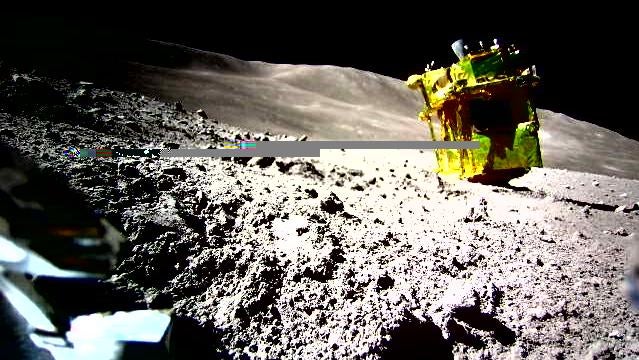The SLIM lunar lander unexpectedly sprung back to life after hibernating during the freezing lunar night, sending a signal back to Earth more than a month after ending up face down on the Moon.
On Monday, Japan’s space agency revealed that it reestablished communication with its lander. Yes, breaking this into two sentences can improve clarity and readability. The team behind the mission sent a command to SLIM and, amazingly, received a response from the lunar lander on February 25. However, communications were terminated as the equipment’s temperatures were too high, the Japan Aerospace Exploration Agency (JAXA) wrote on X.
SLIM, short for Smart Lander for Investigating Moon, entered sleep mode on January 31. This occurred as the Sun set on the lunar near side, rendering the lander’s solar panels unable to generate power. The lunar lander was not designed to survive the freezing temperatures of nighttime on the Moon, which lasts for approximately 14 Earth days. SLIM defied all odds, however, by reviving itself as night turned to day on the Moon. It’s an especially impressive feat considering that the lander is lying face down after performing a less-than-ideal touchdown.
JAXA plans to resume communications with SLIM once the lander’s instruments have cooled down; the recent reestablishment of contact occurred during lunar midday, when temperatures were still too high. During the brief check in on Sunday, JAXA managed to capture an image of the lunar surface using one of SLIM’s navigation cameras.
SLIM touched down on the Moon on Friday, January 19, making Japan the fifth country to successfully put a spacecraft on the dusty lunar surface. About three hours after landing, however, JAXA was forced to shut down the spacecraft’s system because SLIM’s solar cells were not generating enough electricity.
One of SLIM’s two main thrusters may have failed during the final landing phase, causing the lander to end up face down on the Moon with its thrusters pointed upward and its solar arrays facing west, away from the Sun. JAXA made the decision to shut down the spacecraft’s system around three hours after landing to conserve its remaining power, which was at 12% at the time.
The lander had already achieved the main objective of the mission, a pinpoint landing on the lunar surface to test cutting-edge precision technology used to touchdown within a 100-meter radius of a target. With that aside, SLIM seems to not want to give up on its time on the Moon, defying all odds to communicate with its mission team on the ground and surviving one rough lunar night, face down on the dusty surface.
